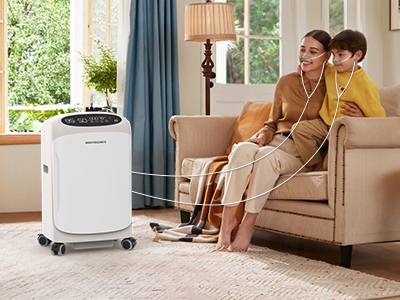03 Oct 2025
Rest is not just about shutting your eyes and praying your neighbor doesn’t rev up the lawnmower at dawn. It’s about cultivating an environment where every inhale feels like a lullaby and every exhale dissolves tension. When oxygen therapy enters the scene, the equation changes—suddenly, sleep and relaxation aren’t uphill battles but supported, restorative journeys. The key lies in designing a space where oxygen therapy feels less clinical and more like part of your nightly ritual.

Setting the Right Atmosphere
Ambience is everything. Fluorescent lighting and clutter do not scream “restful sanctuary.” Dim, warm lighting paired with calming colors—think soft blues, muted greens, or earthy tones—help signal the brain that it’s time to unwind.
Sound matters, too. Instead of the concentrator becoming the sole soundtrack of your night, layer in white noise, soft instrumental music, or even nature sounds. This masks mechanical hums and transforms your room into a cocoon of tranquility.
The goal? A space where oxygen therapy is absorbed into the environment rather than standing out like a medical command center.
Choosing Comfortable and Accessible Equipment
Not all equipment is created equal. A noisy concentrator plonked beside your bed will sabotage even the most zen setup. Prioritize quieter models or situate the machine outside the bedroom with tubing extended safely indoors.
Comfort accessories also make a difference. Cushioned cannulas, tubing covers, and bedside organizers prevent those nightly entanglements that feel like wrestling an octopus. Accessibility is key: keep supplies within arm’s reach so you don’t end up stumbling around in the dark searching for backup tubing at 2 a.m.

Managing Noise and Light
Machines hum. Lights blink. Together, they can feel like a sleepover with a malfunctioning robot. Tame these distractions by masking or minimizing them. Place concentrators on soft mats to reduce vibration noise, and cover unnecessary indicator lights with gentle filters or opaque tape.
If silence is golden, then earplugs are the crown jewels. Likewise, blackout curtains transform your bedroom into a sleep fortress, ensuring nothing—neither sunrise nor streetlight—competes with your rest.
Incorporating Relaxation Rituals
Oxygen therapy shouldn’t feel like a chore wedged into your evening routine. Blend it seamlessly with rituals that soothe both body and mind. Pair your therapy session with calming tea, a book that doesn’t involve plot twists at midnight, or a short meditation practice.
Consistency is key. Rituals act as cues to the nervous system, signaling it’s time to release the day. Over time, oxygen therapy becomes a natural part of that flow, less about “using equipment” and more about “entering rest mode.”
Safety Considerations in the Bedroom
Peace of mind is non-negotiable when building a rest environment. Ensure the concentrator is placed in a well-ventilated space, far from curtains or bedding that could block airflow. Cords and tubing should be arranged to avoid tripping hazards, especially if midnight bathroom visits are frequent.
Most importantly, remember that oxygen and flames are sworn enemies. Candles, incense, or that romantic idea of falling asleep with a fireplace roaring must stay firmly off the table. Romance can live on in the form of soft fairy lights instead.
Keywords: Oxygen Therapy
Originally published 03 Oct 2025, updated 03 Oct 2025.